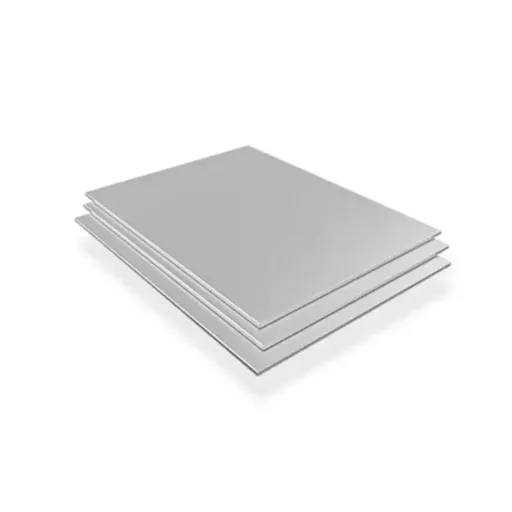In all fairness, stainless steel have long been able to be traded on exactly these terms- the harder it is, the more corrosion-resistant it is, and it is so versatile. Elgin Grade 444 has grabbed attention for its typical array of properties, untypical character, and applications. This blog will discuss in detail the chemical composition, mechanical properties, and practical uses of Elgin Grade 444, as contrasted with those of other commonly used stainless steels. This article will assist you in making technical selections about stainless steel with all the necessary information from the standpoint of a materials engineer, manufacturing expert, or industry professional. Read on to find out why Elgin Grade 444 is worthy of attention in both industrial and consumer applications.
Properties and Benefits of Grade 444 Stainless Steel
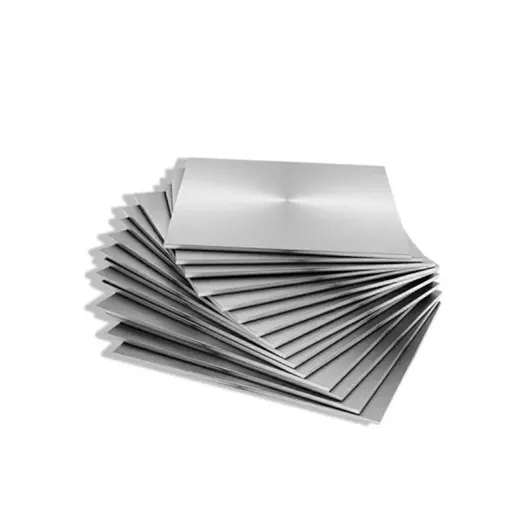
Superior Properties
- ✓ Excellent resistance to chloride stress corrosion cracking
- ✓ Low coefficient of thermal expansion
- ✓ High thermal conductivity
- ✓ Enhanced localized corrosion resistance
Technical Specifications
Molybdenum Content: 1.75-2.50%
Carbon Content: <0.025%
PREN Value: Nearly 24
The properties of Grade 444 distinguish it for demanding applications. This ferritic alloy exhibits good resistance to chloride stress corrosion cracking (SCC), which is great advantage over austenitic grades, particularly in an environment with high chloride ions. It is also preferred in rapid temperature change applications or high thermal loading, such as heat exchangers and automotive components, due to its low coefficient of thermal expansion and high thermal conductivity.
Its composition, with higher molybdenum content (generally 1.75-2.50%), increases the pitting resistance equivalent number (PREN) and so bestows enhanced localized corrosion resistance than any ferritic and maybe some austenitic grades. It was found through research that Grade 444 could reach a PREN of nearly 24. This makes the alloy very reliable with respect to severe chemical attacks in applications such as desalination plants and swimming pool systems.
Grade 444 also exhibits excellent weldability when suitable welding practices are applied. Its low carbon content (<0.025%) forestalls carbide precipitation, hence minimizing intergranular corrosion after welding. The combination with ferromagnetic properties and high mechanical strength makes it well-suited for structural applications in which performance and material cost are equally important.
💰 Cost Advantage
From the view of cost, the non-existence of considerable amounts of nickel keeps the production cost of Grade 444 down, but it also ensures greater price stability during fluctuations in raw material markets. This price factor, combined with its performance qualities and resistance to deterioration, makes it a cheap candidate in sectors where performance and economic viability are a priority.
Comparison With Other Grades
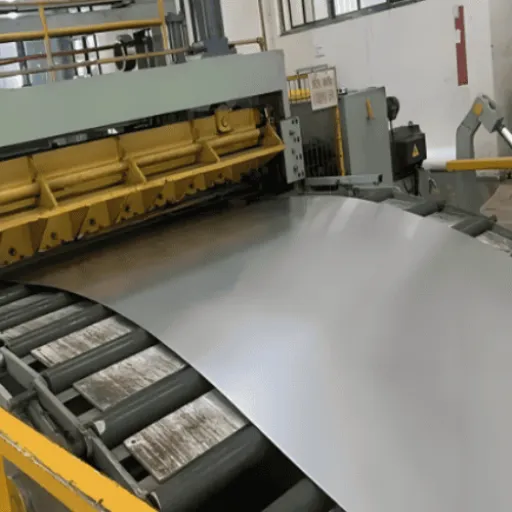
| Grade | Nickel Content | Molybdenum Content | Cost Factor | Primary Applications |
|---|---|---|---|---|
| Grade 444 | ~1% | 1.75-2.5% | Lower Cost | Heat exchangers, automotive |
| Grade 304 | 8-10.5% | – | Higher Cost | General purpose |
| Grade 316 | 10-14% | 2-3% | Highest Cost | Marine, chemical processing |
There are distinct dissimilarities in terms of composition, performance, and cost efficiency when comparing Grade 444 stainless steel against other commonly used grades like Grades 304 and 316. Grade 444 as a ferritic stainless steel, contains lower amounts of nickel, normally about 1%, while Grade 304 contains about 8-10.5% of nickel and Grade 316 contains about 10-14%. The greater nickel in Grades 304 and 316 increases their corrosion resistance and the mechanical properties under extreme corrosive conditions, such as marine environments or exposure to chlorides. However, this’s accompanied by a high price for material.
From the corrosion-resistance perspective, Grade 444 is very well performed as regards pitting and crevice corrosion due to increased molybdenum content (generally 1.75-2.5%). While it is less resistant to chlorides than Grade 316, it fares better than Grade 304 when exposed to moderate chloride environments or oxidizing agents. For example, industry data suggest that Grade 444 possesses better resistance to stress corrosion cracking compared with austenitic grades like 304, and hence it is particularly preferred for applications such as water heaters, desalination plants, and heat exchangers.
The Grade 444 also has better thermal conductivity than austenitic grades, coupled with a lower coefficient of thermal expansion, providing it with greater dimensional stability under fluctuating thermal conditions. This is a huge benefit in applications subjected to cyclic heating and cooling.
Economic Advantage
From the economic point of view, lesser amounts of nickel in Grade 444 make it much cheaper than Grades 304 and 316, whose costs are greatly influenced by nickel market volatility. Where cost, material stability, and performance intersect in industrial applications, Grade 444 steps up as the very lucrative contender, giving in both aspects: affordability and functionality. This makes it an especially strong contender in industries like automotive, architecture, and domestic water systems.
Types of Stainless Steel
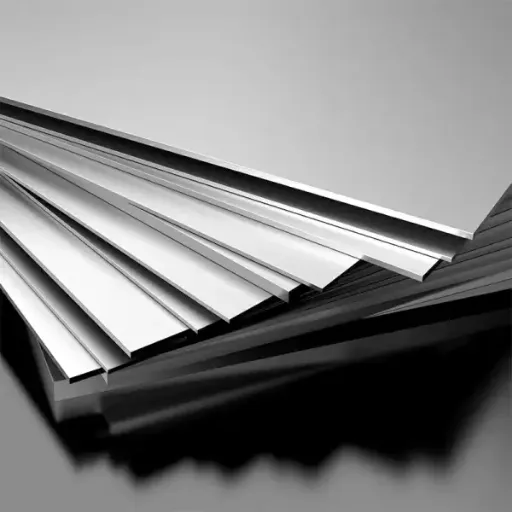
Among the various types of stainless steels available in the market, 444 may be suggested for its cost balance and good performance, largely considering how Grades 304 and 316 tend to be more undermined by the nickel price fluctuations. It is an excellent selection for industrial applications where a balance of price versus reliability is important.
Ferritic Stainless Steel Characteristics
Ferritic stainless steels find their strengths in magnetic properties, corrosion resistance, and cost. These steels consist essentially of iron and chromium, and the chromium goes from 10.5% all the way to 30%, giving these steels the ability to resist oxidation and corrosion, especially in mild corrosive environments. In contrast to austenitic stainless steels, ferritic grades do not have nickel as a major alloying element, thereby keeping the material cost lower while maintaining stable performance under certain applications.
Key Characteristics:
- Good thermal conductivity
- Resistance to stress corrosion cracking
- Magnetic properties
- Lower material costs
Other mechanical properties of ferritic stainless steels include good thermal conductivity and resistance to stress corrosion cracking. Typical examples of these grades are stainless steel 409 and stainless steel 430. While Grade 430 enjoys widespread use in domestic appliances and decorative trims because of its great formability and aesthetic finishing, Grade 409 finds a ready application in automotive exhaust systems being well-known for its high-temperature strength and oxidation resistance.
Recent literature indicates that ferritic stainless steels are involved in about 25% of the global production of stainless steels, making them the second-largest family of stainless steels immediately after the austenitic kinds. These steels serve best in places where moderate corrosion resistance and economic efficiency are of paramount concern, such as automotive manufacturing, industrial equipment, and construction.
📊 Market Share
Ferritic stainless steels represent approximately 25% of global stainless steel production, making them the second-largest family after austenitic steels.
The continued advancements in the science of materials have further allowed enhancements into ferritic steels. For example, new alloying methods allow for what can be termed “stabilized ferritic stainless steels” that incorporate small additions of titanium or niobium to improve weldability and resist grain growth. This makes ferritic grades a sustainable and performance-driven choice for many industrial and commercial applications.
Martensitic Stainless Steels Explained
The martensitic stainless steels represent an important grouping of stainless steels that are known for their high forces, hardness, and moderate corrosion resistance. These steels find their main composition in chromium (generally 11-18%) and carbon at varying levels, with nickel as the minor one. When viewed from the microstructure level, martensitic stainless steels get transformed into a martensite phase by a rapid quenching from austenitic field at high temperatures, followed by an appropriate tempering operation to tailor the mechanical properties.
Common Grades
410, 420, 440C
Chromium Range
11-18%
Giving it strong mechanical strength, martensitic stainless steels find broad applications in such areas as cutlery, surgical instruments, turbine blades, and automobile parts. Grades commonly associated with this type include 410, 420, and 440C, with each having a profile of performance that differs from the other. For instance, Grade 410 is highly resistant to wear and is tough compared to others, with 440C, on the contrary, has a higher carbon content obtained for superior hardness and is, therefore, suited for advanced tooling applications.
New metallurgical procedures are steadily making martensitic stainless steels more applicable. For instance, improved heat treatment processes can now be ensured that enhance toughness without the loss of hardness required for severe application. Also, the data suggest that particular modified martensitic alloys of molybdenum and vanadium additions produce about a 10-20% increase in corrosion resistance that allow for their use in more aggressive environments.
🔬 Performance Improvements
Modified martensitic alloys with molybdenum and vanadium additions show a 10-20% increase in corrosion resistance, enabling use in more aggressive environments.
While they are excellent at it, martensitic grades are not nearly as corrosion-resistant as austenitics because of their relatively low chromium content and negligible nickel content. Nonetheless, they are increasingly adopting surface coatings and passivation techniques to offset this limitation in industrial applications effectively.
Range of Applications for Grade 444
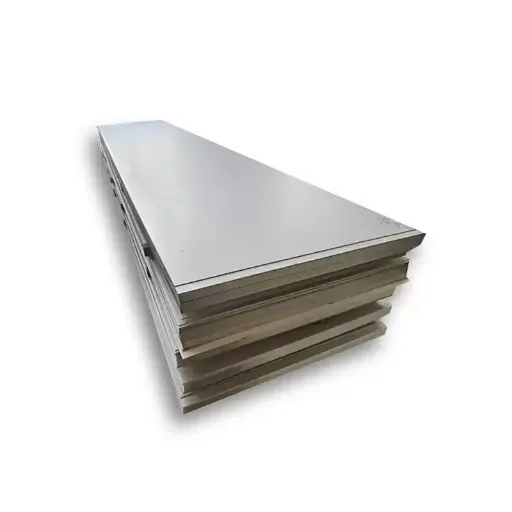
Grade 444 stainless steel is mostly employed in corrosive environments where the mechanical properties at heat are very much demanded. That is why I would recommend it mainly for automotive exhaust systems, heat exchangers, and components for water tanks as the elevated resistance to chloride stress corrosion cracking and excellent weldability can be a major advantage.
🚗 Automotive Applications
Grade 444 stainless steel became very important in the automotive industry due to the blend of its properties which exert high corrosion resistance, good formability, and resistance to chloride-induced stress corrosion cracking. Being a ferritic stainless steel, it is mainly used in the production of automotive exhaust systems, heat exchangers, and many other parts wherein durability and performance are of immense importance.
⚡ Performance Boost
Grade 444 stainless steel in exhaust systems can extend component lifespan by up to 30% over traditional materials like aluminized steel.
Use of Grade 444 in automotive exhaust systems particularly enables it to withstand unique temperatures and oxidation resistance, ensuring the durability of the parts that are exposed to extreme thermal cycles and corrosive exhaust gases. It is now widely believed that a greater use of Grade 444 stainless steel in the manufacturing of exhaust system components can extend the life span of these systems by up to 30% over the traditional materials such as aluminized steel.
Another of the most important applications would include fuel tanks, where Grade 444 stainless steels could serve ideally thanks to their great corrosion resistance when facing the aggression of ethanol-blended fuels, which shall,” in truth, be very aggressive to some materials. Studies have shown that stainless steel fuel tanks reduce long-term maintenance costs of these vehicles considerably, thereby presenting a cheaper option to manufacturers and consumers alike.
With advances in welding technology and forming processes, integrating Grade 444 into large-scale automotive production lines has become easier, thereby accentuating its value to the industry. Hence, with increased demand for lightweight, sustainable, performance automotive components, it’s only expected that this material will be in great demand.
🏗️ Applications in Construction
In the construction sphere, Grade 444 stainless steel has carved a niche for itself due to its excellent corrosion resistance, high strength, and superior durability. Being resistant to chloride stress corrosion cracking, it would be a valuable asset to structures subjected to marine environments or de-icing salts, such as bridges, retaining walls, and coastal infrastructure. Moreover, it exhibits very good resistance to atmospheric pollution, thus giving facades, roofing, and cladding materials an extended lifespan.
🌍 Green Building Benefits
- LEED certification support
- BREEAM compliance
- Energy efficiency enhancement
- Sustainability goals achievement
The latest advances in fabrication and welding techniques have facilitated the use of Grade 444 in structural components without any compromise as to material integrity or ease of assembly. Industry reports suggest that the global stainless steel market was valued at close to $96 billion in 2022 and is set to grow at a CAGR of 6.2% till 2030. One of the reasons for this growth is the construction industry’s willingness to embrace high-performance materials like Grade 444, given the growing priority for sustainability and low-maintenance solutions by developers and engineers.
The reduced lifetime cost of maintenance for large-scale projects due to the use of Grade 444 meshes well with green-building certifications such as LEED and BREEAM, which support energy efficiency and sustainability goals. Grade 444, for instance, possesses high thermal conductivity, which is beneficial for solar panel mounting systems, while its reflectivity helps in combating the urban heat island effect. All in all, Grade 444 is already demonstrating its future-ready value with regard to fulfilling the demanding and often conflicting criteria of modern construction while establishing itself as a long-term investment for their resilience and environmental safeguarding.
📈 Market Growth
$96B
Market Value (2022)
6.2%
CAGR until 2030
Manufacturing Process of Grade 444
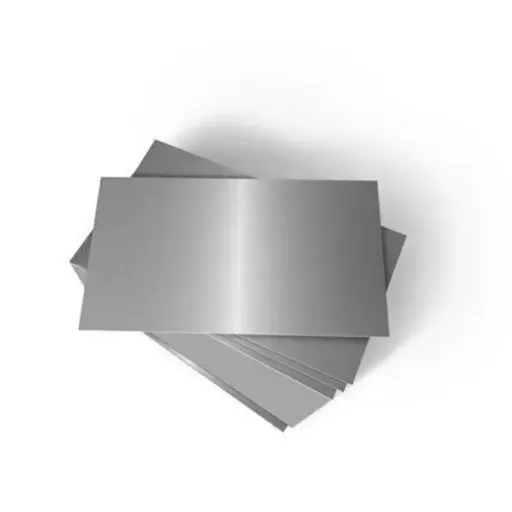
The manufacturing process of Grade 444 needs advanced metallurgical procedures for the development of its upper-grade properties. The first step consists of melting together raw materials such as chromium, molybdenum, and iron in an electric arc furnace. Then, precise alloying and refining are carried out to obtain the required composition. Afterward, molten steel is cast into slabs, which are hot and cold-rolled to a defined thickness and finish. The last step is annealing and pickling of the product to increase corrosion resistance and mechanical properties, greatly subjected to the exacting industry specifications.
Melting
Electric arc furnace processing
Alloying
Precise composition control
Rolling
Hot and cold processing
Finishing
Annealing and pickling
Quality Control Measures
Rigorous quality control measures are taken during the manufacturing process for making sure that Grade 444 stainless steel has superior performance and can be trusted. These include the use of advanced testing, with non-destructive testing (NDT) techniques like ultrasonic testing and dye penetrant inspection to trace surface and subsurface defects. Advanced chemical analysis via spectrometry proves the chemical constitution of the material conforming to the standards of composition, thus confirming the chromium and molybdenum content levels necessary for corrosion resistance.
Testing Methods:
- Ultrasonic testing
- Dye penetrant inspection
- Chemical analysis via spectrometry
- Tensile strength testing
- Hardness testing
- Impact strength testing
Further testing is carried out mechanically, such as tensile tests, hardness tests, and impact strength testing, as all guarantee the specimen fulfills or surpasses the standards. For example, the specimen is usually tensile for strength at 450 MPa, and impact testing basically confirms its ability to endure extreme operational conditions, while the intergranular corrosion test as per ASTM A262 identifies corrosive tendencies, especially in applications where resistance to chloride-induced stress is required.
To reduce chances of failure during installation or operation, dimensional accuracy remains checked with the help of proper measuring tools and is verified against client specifications. Strict monitoring of heat treatment and annealing processes is also done to guarantee uniform microstructure and optimum mechanical properties. All these checks were made under the ambit of ISO 9001-certified management systems, thus ensuring a very holistic approach to quality assurance.
| Test Type | Standard | Typical Value |
|---|---|---|
| Tensile Strength | ASTM | 450 MPa |
| Intergranular Corrosion | ASTM A262 | Passed |
| Quality Management | ISO 9001 | Certified |
🤖 Future Technology
Continuous enhancements in quality control technologies, such as the incorporation of artificial intelligence into defect detection algorithms, are set to further refine inspection methodologies. These precautions ultimately confirm Grade 444 stainless steel as an assured material for highly essential applications, ranging from water treatment systems to automotive exhausts.
🌱 Environmental Impact of Manufacturing
The manufacturing activities of Grade 444 stainless steels, like many other industrial activities, have serious environmental issues, and their management must be done with reference to present sustainability standards. Among the main environmental issues are energy use, greenhouse gas emissions, and raw materials management. High-temperature furnaces sit at the heart of the production stage, drawing energy in massive quantities. Having said that, there sits an estimate in industry data that stainless steel amounts to half of 10% of the entire global industrial energy usage in the year 2021, which is a problem for CO2 emissions unless we use the source of energy from renewables.
⚠️ Environmental Challenges
- High energy consumption
- Greenhouse gas emissions
- Raw material extraction impact
- Mining habitat disruption
Extraction of raw materials, especially chromium and molybdenum, which are the main ingredients in Grade 444 stainless steel, does zigzag the balance of the landscape, destroying an ecosystem sometimes. Mining disturbs the habitat and generates huge volumes of waste rock and tailings. However, with recycling taking a few steps forward, such negative effects have been somewhat addressed; stainless steel now ranks as one of the highly recycled materials with a recycling rate of over 80% across the globe. From recycling that is so effective, lessened energy consumption takes place, thereby, on a rough basis, cutting down CO2 fumes nearly to 40% against the primary steelmaking processes.
Stakeholders have alone working to enhance an environmentally friendly practice while complying with rigid environmental standards, for example, the ISO 14001 environmental management. At some level, coupled with the effort of enhancing new manufacturing methods such as those used in electric arc furnaces with power from renewable sources, we may well say that the journey towards preserving the environment while manufacturing really good materials continues.
♻️ Recycling Benefits
80%+
Global Recycling Rate
40%
CO2 Reduction vs Primary Production
Reference Sources
-
AZoM: This source details the properties of grade 444 stainless steel, highlighting its high corrosion resistance due to its chromium content.
-
SteelPro Group: It explains the composition and forms of grade 444 stainless steel, emphasizing its low carbon and nitrogen content, and its common applications in sheets and coils.
-
Civmats: This site discusses the applications of grade 444 stainless steel, such as in heat exchanger tubes and cold water tanks, and its advantages over grade 316 in welding.
Frequently Asked Questions (FAQs)
What has grade 444 been compared to in terms of grades 420 and 440?
With relatively high chromium content, grade 444 stainless steel exhibits better corrosion resistance when compared to grades 420 and 440. As such, it would be apt for applications involving precipitation-hardening conditions, such as marine and chemical processing environments.
Could you list the mechanical properties of duplex stainless steels?
Duplex stainless steels of grades 317 and 317L are a compromise of austenitic and ferritic stainless steel properties. While they are high in strength and hardness, they resist corrosion excellently and hence fit for applications that require stainless steels with high durability and resistance to stress corrosion cracking.
What are some suitable applications for grade 436 stainless steel?
Grade 436 stainless steel is often used wherever good corrosion resistance is needed, including automotive and appliance trim. In the balance of strength and corrosion resistance, it makes an extremely well-rounded choice across various industrial applications.
Why is machinability an important property in stainless steels such as grade 301?
Machinability of stainless steels like grade 301 is crucial in the formation and shaping of materials into required products. This allows an efficient manufacturing process for industries demanding extremely fine components like furnace parts and food processing equipment.
What are some advantages of precipitation-hardening stainless steels?
Precipitation-hardening stainless steels such as 17-4 are meant to enable a high level of strength and hardness via heat treatment. Hence, they are well suited for aerospace, oil and gas, and other industries where mechanical properties need to stand up to extreme conditions.
How does the corrosion resistance of grade 410s compare with that of grade 414?
Grade 410s offers corrosion resistance of a martensitic stainless steel, whereas grade 414 emphasizes strength and hardness. Selection among these grades hinges on given application requirements, specifically in terms of corrosion resistance.
Ready to Implement Grade 444 Stainless Steel?
Grade 444 stainless steel represents an excellent balance of performance, cost-effectiveness, and environmental responsibility. Its superior corrosion resistance, excellent weldability, and competitive pricing make it an ideal choice for automotive, construction, and industrial applications.

